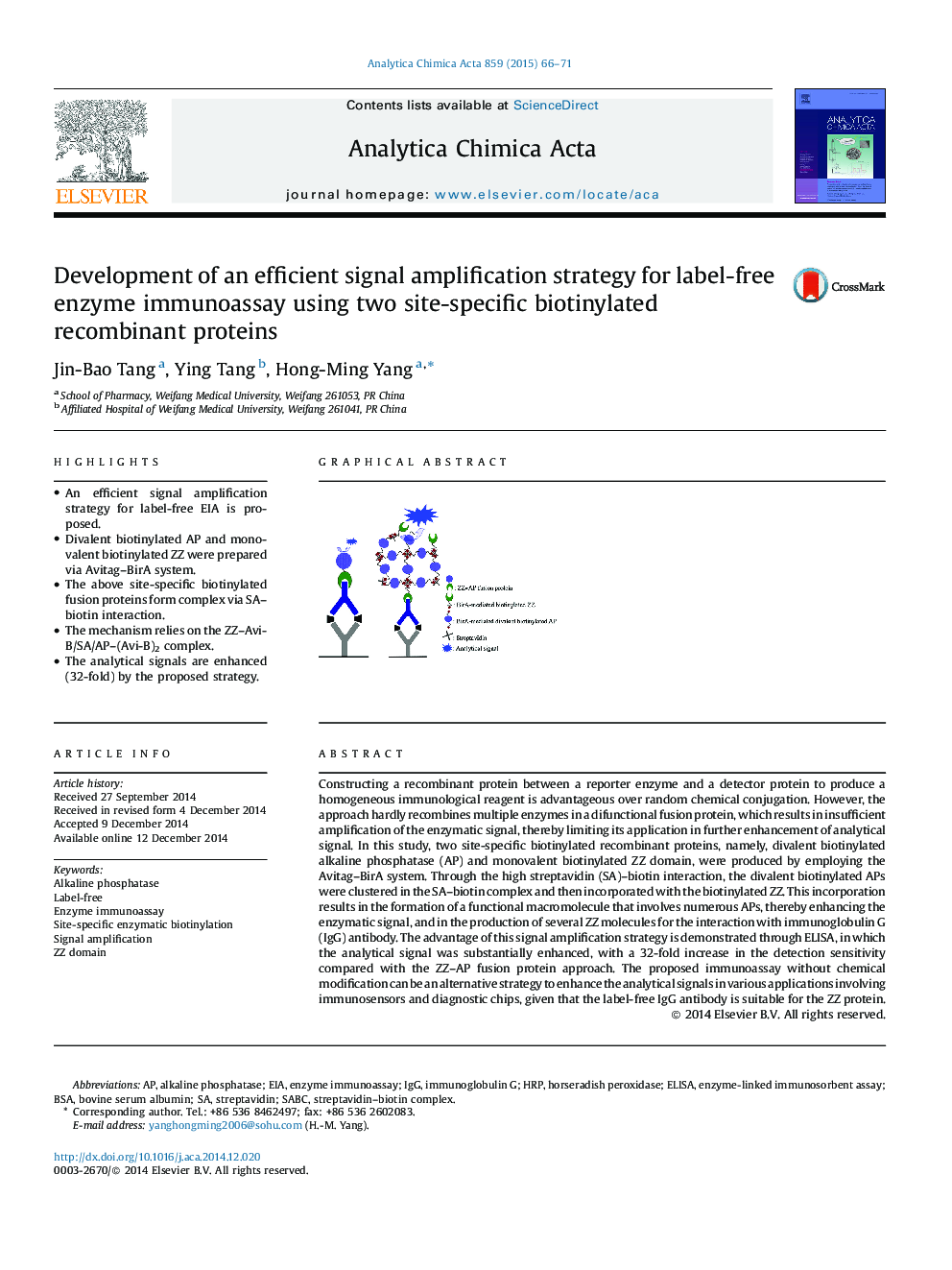| Article ID | Journal | Published Year | Pages | File Type |
|---|---|---|---|---|
| 1164183 | Analytica Chimica Acta | 2015 | 6 Pages |
•An efficient signal amplification strategy for label-free EIA is proposed.•Divalent biotinylated AP and monovalent biotinylated ZZ were prepared via Avitag–BirA system.•The above site-specific biotinylated fusion proteins form complex via SA–biotin interaction.•The mechanism relies on the ZZ–Avi-B/SA/AP–(Avi-B)2 complex.•The analytical signals are enhanced (32-fold) by the proposed strategy.
Constructing a recombinant protein between a reporter enzyme and a detector protein to produce a homogeneous immunological reagent is advantageous over random chemical conjugation. However, the approach hardly recombines multiple enzymes in a difunctional fusion protein, which results in insufficient amplification of the enzymatic signal, thereby limiting its application in further enhancement of analytical signal. In this study, two site-specific biotinylated recombinant proteins, namely, divalent biotinylated alkaline phosphatase (AP) and monovalent biotinylated ZZ domain, were produced by employing the Avitag–BirA system. Through the high streptavidin (SA)–biotin interaction, the divalent biotinylated APs were clustered in the SA–biotin complex and then incorporated with the biotinylated ZZ. This incorporation results in the formation of a functional macromolecule that involves numerous APs, thereby enhancing the enzymatic signal, and in the production of several ZZ molecules for the interaction with immunoglobulin G (IgG) antibody. The advantage of this signal amplification strategy is demonstrated through ELISA, in which the analytical signal was substantially enhanced, with a 32-fold increase in the detection sensitivity compared with the ZZ–AP fusion protein approach. The proposed immunoassay without chemical modification can be an alternative strategy to enhance the analytical signals in various applications involving immunosensors and diagnostic chips, given that the label-free IgG antibody is suitable for the ZZ protein.
Graphical abstractFigure optionsDownload full-size imageDownload as PowerPoint slide
